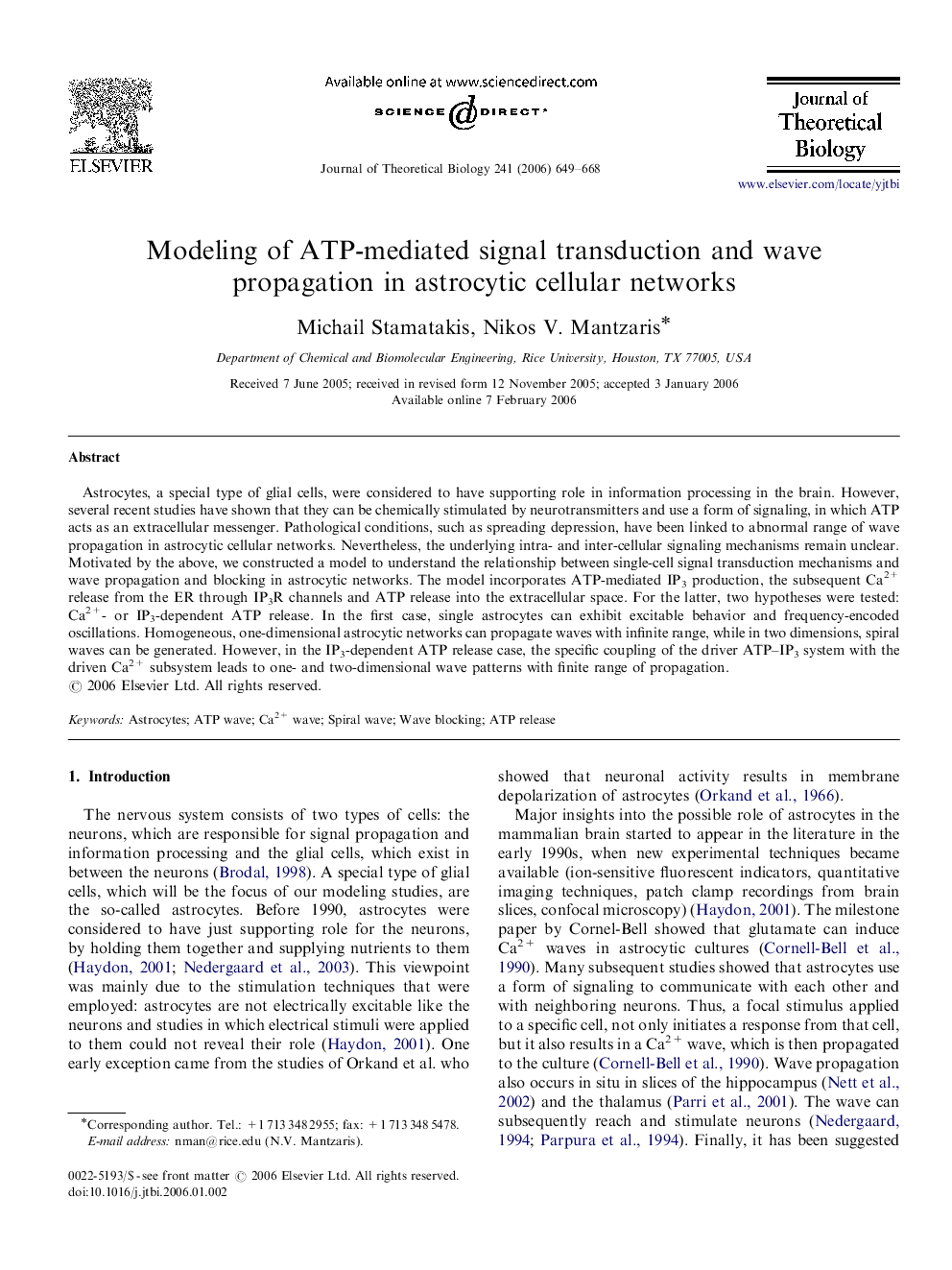| Article ID | Journal | Published Year | Pages | File Type |
|---|---|---|---|---|
| 4499415 | Journal of Theoretical Biology | 2006 | 20 Pages |
Astrocytes, a special type of glial cells, were considered to have supporting role in information processing in the brain. However, several recent studies have shown that they can be chemically stimulated by neurotransmitters and use a form of signaling, in which ATP acts as an extracellular messenger. Pathological conditions, such as spreading depression, have been linked to abnormal range of wave propagation in astrocytic cellular networks. Nevertheless, the underlying intra- and inter-cellular signaling mechanisms remain unclear. Motivated by the above, we constructed a model to understand the relationship between single-cell signal transduction mechanisms and wave propagation and blocking in astrocytic networks. The model incorporates ATP-mediated IP3 production, the subsequent Ca2+ release from the ER through IP3R channels and ATP release into the extracellular space. For the latter, two hypotheses were tested: Ca2+- or IP3-dependent ATP release. In the first case, single astrocytes can exhibit excitable behavior and frequency-encoded oscillations. Homogeneous, one-dimensional astrocytic networks can propagate waves with infinite range, while in two dimensions, spiral waves can be generated. However, in the IP3-dependent ATP release case, the specific coupling of the driver ATP–IP3 system with the driven Ca2+ subsystem leads to one- and two-dimensional wave patterns with finite range of propagation.
